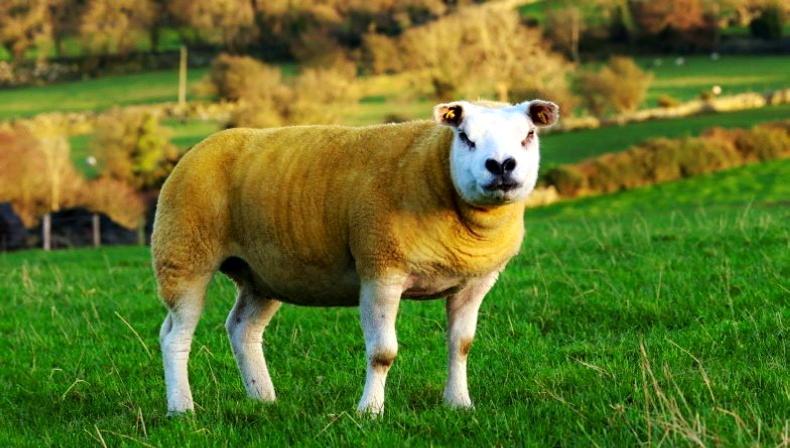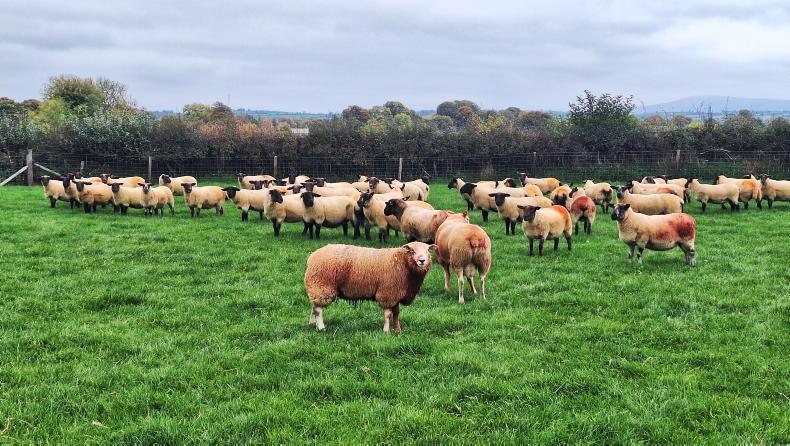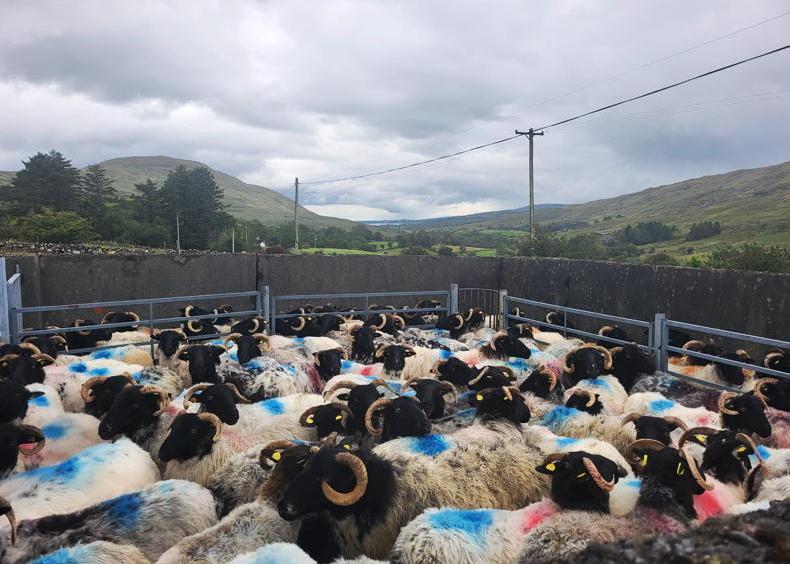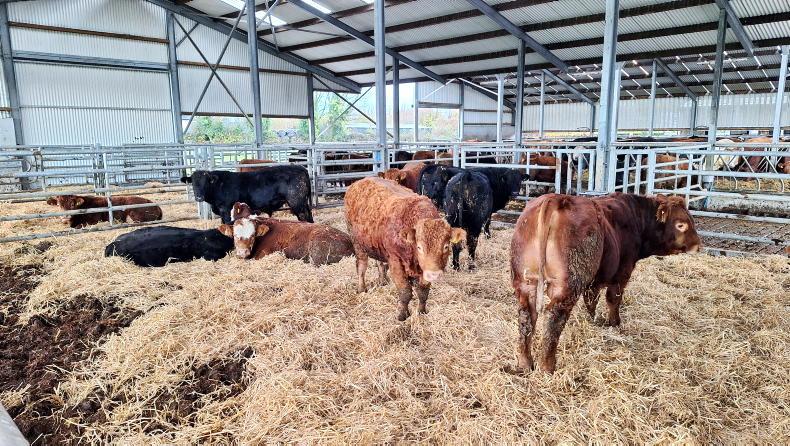The topical issue of pedigree ram lambs being reared on intensive diets and the associated negative implications on longevity and fertility was raised on a number of occasions at last week’s Sheep Ireland breeding conference in Tipperary.
Kevin McDermott, Sheep Ireland, acknowledged that moving to a system where rams are purchased on the merit of their genetic evaluations and reared without excessive feeding is proving challenging in the context of commercial farmers failing to provide adequate incentives or market signals.
He said that there have been numerous examples in recent years of breeders presenting grass-fed rams at sales but meeting much lower demand.
“A grass-fed ram will obviously be lighter than a ram that is fed on an intensive finishing diet. You could have a 60kg grass-fed ram and an 80kg ram fed intensively. It is common for farmers to be asking for grass-fed rams yet when it comes to the sale, many farmers will forego bidding on the lighter ram as it doesn’t look as good. You can’t have your cake and eat it.”
Ram longevity
A number of farmers at the event said longevity issues with intensively produced rams are underpinning the growth in the sale of hybrid rams.
Kevin said Sheep Ireland’s aim irrespective of if farmers are producing purebred or hybrid rams is to continue to drive pedigree improvements and ensure data recording continues to identify elite animals to breed from.
“If we consider hybrid, we can still have a direct influence in the breeding of these rams through their parents. Farmers purchasing such hybrid rams should ensure that the parents of these rams have the desired traits.”
In this regard, ram buyers should be mindful that the term ‘hybrid rams’ is not used as a marketing ploy to enhance the value of rams offered and ensure that its genetic merit meets your desired characteristics.
Future evaluations
Noirin McHugh, Teagasc, said that they are progressing well in getting genomic information on ram functionality, including longevity and vigour, identified and incorporated into genetic evaluations in the future.
“We are seeing this in groups of rams where some rams are underperforming and some are performing much better and are the sire of a significantly higher number of lambs. DNA sampling is getting us a lot closer to that [incorporating in genetic evaluations]”.
Greater appreciation
Kevin outlined how Sheep Ireland has now built up an extensive bank of information which proves that five-star animals are outperforming one-star animals on a continuous basis.
He said that Sheep Ireland intends to promote this message to both commercial farmers and the cohort of ram breeders who have not yet interacted with the Sheep Ireland breeding programme. He said there is also an onus on breeders to use this information to their benefit when marketing rams.
“Pedigree breeders often comment that they are collecting information for Sheep Ireland.
“While we appreciate all the information we are getting, breeders need to be aware that the actions they take are also for the benefit of their own flocks and the wider sheep industry, and not be afraid to point out these benefits when selling rams”.
Farm walk
Last week’s conference also included a visit to the farm of John Large, who farms with his wife Sheila and family in Gortnahoe, Co Tipperary. John has been a member of the Central Progeny Test programme since 2010.
During this time, the farm has tested over 200 sires, collected records on over 7,000 lambings and 12,600 lambs, along with collecting over 50,000 weight records.
The 620-head ewe flock is run alongside a herd of 30 suckler cows on 80ha, which is split in to three fragmented blocks. The high-performing flock is a mixture of numerous breeds and ewes rated from one- to- five-stars to put genetic evaluations to the test in a commercial setting.
Laproscopic and cervical AI is used to eliminate environmental bias and natural mating is also used for repeat breeders.
Speaking at the farm walk, Eamon Wall, Sheep Ireland, outlined: “The data collected is not pampered in any way and gives a solid base on which to validate the genetic indexes.
“There is a whole mix of breeds and we wouldn’t be in a position to have across breed variation without farms like John’s.
“There are some ewes that have six or seven lambings and this data is contributing back to sires used seven or eight years ago and is improving the accuracy of their descendants or relatives on an ongoing basis. There might be sheep here that John doesn’t like, but these need to be evaluated too.”
Current performance
The flock is a high-performing flock with the average litter size in the region of 1.93 lambs per ewe joined in the most recent season.
The average daily gain of lambs from birth to 100 days old is running at 288g/day.
Ewe lambs were bred in the past, but John has moved away from this practice in recent years.
In explaining the reasoning, he said: “I found the benefits of breeding ewe lambs in recent years to be questionable. Ewe lambs will not breed successfully if they don’t hit weight targets. I found I was feeding ewe lambs to get them to the weight, feeding them after they lambed and then feeding their lambs. “When all is added up, I don’t think I was making much from it except more work. With a fragmented farm, it also suits me to have a batch of sheep I can use to tidy up”.
Seeing is believing
The benefit of breeding using five-star genetics was demonstrated at the walk. An analysis was completed on commercial ewes on the Sheep Ireland database rated as one-star and five-star.
Table 1 summarises the difference in performance between the batch of ewes, which would be impossible to differentiate visually. The five-star ewes weaned 1.7 lambs per ewe compared to 1.54 lambs weaned from the one-star cohort.
Progeny from the five-star ewes reached slaughter eight days quicker.
The potential net profit from a flock of the five-star ewes was calculated with Teagasc modelling and shown to be €379/ha or €45 per ewe. This compares to €230/ha for the one-star ewes and €27/ewe.
There are also environmental benefits from using high genetic merit animals, with each kilo of carcase produced with a CO2equivalent of 21.7kg versus 23.3kg for the low genetic merit progeny.
The same comparison was carried out on daughters of high and low genetic merit rams used in John Large’s flock in 2019.
The number of daughters lambed from the two sires was similar, removing any numerical bias. There was a 15% or 0.27 lambs/ewe difference in litter size in favour of progeny from the five star rams.
The weaning weight of the progeny from the two-star ram was 0.5kg heavier, but the economic benefit of this was overwhelmingly compensated by having more lambs to sell from the high genetic merit ram.
Looks and genetics
Kevin advised farmers that the process of selecting rams should now include a physical examination and an assessment of its predicted breeding performance.
He said that level of genotyping being carried out has grown majorly with a huge increase in the number of genotyped rams coming on to the market.
He also outlined that this should increase the accuracy of genetic evaluations and reduce the level of fluctuation witnessed in recent years.









SHARING OPTIONS